Part two of the history of the snowmobile, starts when Joseph-Armand Bombardier, of Valcourt, Quebec, Canada, made his first attempt at building a snowmobile in 1922.
At the age of fifteen. J.-Armand, as he was known, was a tinkerer who had a habit of taking the family car apart. To divert his son’s attention from the family car, Alfred Bombardier bought him an old Model T to work on.
Bombardier Air Sled
J.-Armand and his younger brother, Léopold, mounted the Model T engine to a framework on sleigh rails and used a propeller to drive the machine. With only a rope to steer the strange-looking sleigh, and no brakes to stop it, the boys sped across the yard in sight of their horrified father.
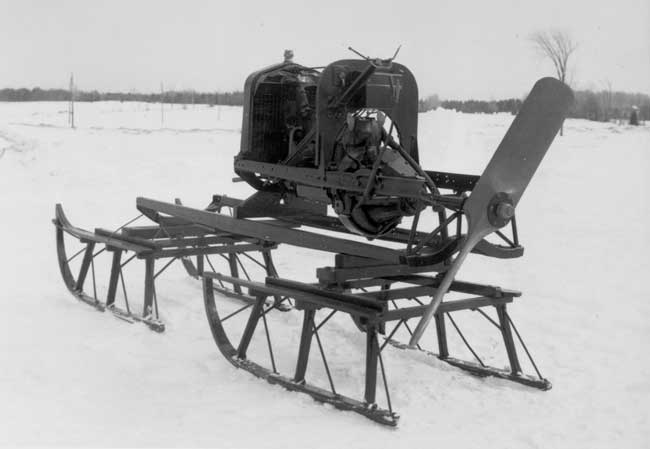
When they got back home, Alfred made them take the machine apart and forbid them to build another one. This, however, did not stop the young Bombardier, as later in his life, J.-Armand would become a very successful snowmobile manufacturer.
After a few years living in Montreal, where he worked as a mechanic during the day and took classes at night to learn more about mechanics and electricity, J.-Armand Bombardier returned to Valcourt. In 1926, in a garage that his father had built for him, J.-Armand began building snowmobiles by modifying old cars. He continued this practice until 1931, building a total of ten snowmobile conversions between 1936 and 1935.
J.-Armand was never fully satisfied with these snowmobile conversions. He felt that they were too heavy and hard to maneuver. Not one to give up, he custom-built a lightweight machine that was driven by a propeller. As with his childhood experiment, the propeller was dangerous, there was no reverse and the machine had no brakes.
Sprocket Wheel Driven Track System
In the winter of 1934, J.-Armand’s two-year-old son, Yvon, died of appendicitis. The family was not able to get Yvon to a hospital for treatment due to heavy snow. Because of his son’s death, Bombardier decided he needed to develop a reliable way to travel through snow, he continued experimenting, and in 1935 he invented a sprocket wheel driven track system and built the first Bombardier Snow Coupe, using this system.
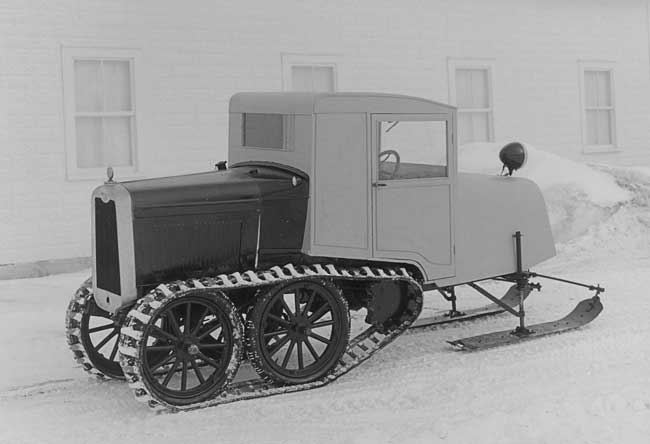
In June of 1937, Bombardier received a patent for his sprocket wheel track system. He had built seven snow coaches while waiting for the patent, these seven snow coaches were built in the new factory during the winter of 1936-37. The name B7 was given to these first coaches, it stood for Bombardier 7-passenger.
Bombardier continued building snow coaches through the 1950s, many different models and styles were built during this period. Bombardier Snow Coaches were used in many different applications, passenger vehicles, ambulances, delivery vehicles, and, during World War II, military transport vehicles were just a few of the many uses these vehicles saw.
1959 Ski-Doo: The First Modern Snowmobile
Next was a major turning point in the use of the snowmobile. In 1959 Bombardier introduced the first modern style snowmobile, originally named Ski Dog. The name was quickly changed to Ski-Doo. The 1959 Ski-Doo was a new design from the ground up, and is now considered by many snowmobile enthusiasts to be the first conventional snowmobile design, as we know it today.
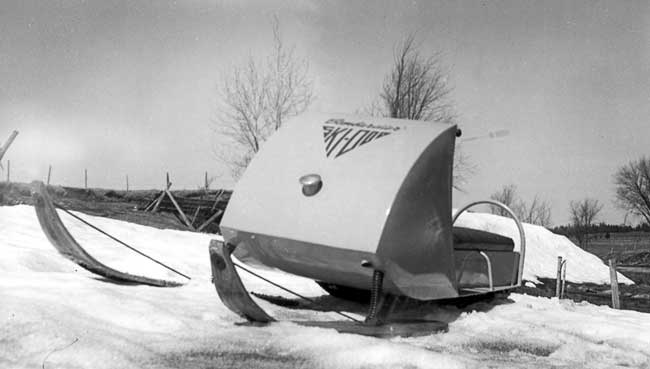
The sled employed a stamped steel chassis with the fuel tank built into it. Long wooden skis were attached to steel spindles that mounted through the front of the chassis and connected to a set of handle bars by steering rods. A four-stroke Kohler engine was mounted on top of the chassis’ tunnel, in front of the operator’s seat. A steel hood was mounted to the front of the chassis to protect the engine and riders from wind and snow.
The 1959 Ski Dogs used a planetary drive gearbox, later models used a continuously-variable transmission (CVT) drive system to get the power from the engine to the driveshaft. The drive shaft used plastic drive cogs to turn the all new continuous rubber track that propelled the sled through the snow.
The rear suspension was made up of a series of small spring-loaded frame assemblies with small rubber wheels mounted to them. These were called bogie wheel assemblies.
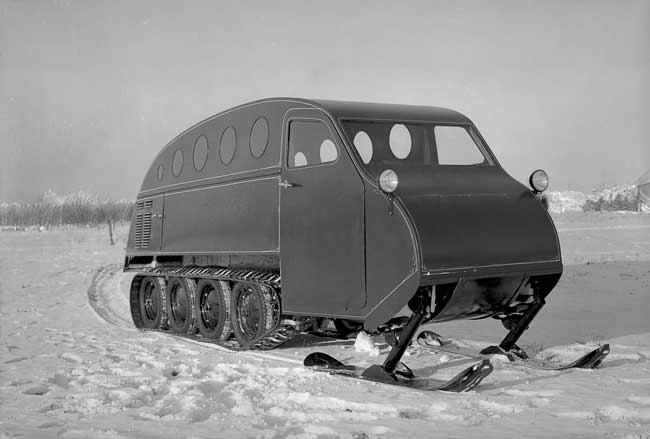
The new 1959 Ski Doo snowmobile weighed approximately 135 kilograms, later models weighed one-hundred and fifty kilos, or about three-hundred and thirty pounds. This was very light compared to previously built snowmobiles that weighed upwards of five- hundred pounds to over one-thousand pounds. The Bombardier B12 snow coach weighed 1,542 kilos, or approximately 3,400 pounds.
Ski-Doo snowmobiles quickly became the number-one selling snowmobile in the world, with two-hundred and twenty-five sleds being sold the first year of production. Because of their light weight and excellent maneuverability, people began buying snowmobiles just to ride for recreation.
Over Eight-Thousand Snowmobiles Sold
Ski-Doo sales increased every year through 1963, with over eight-thousand snowmobiles being sold during the first five years of production. Ski-Doo snowmobiles had become so popular that snowmobiling was often referred to as Ski-Dooing.
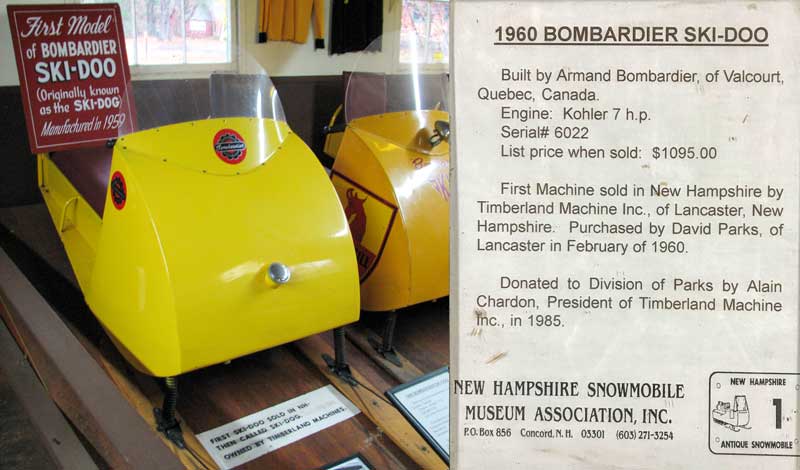
Joseph-Armand Bombardier passed away in February of 1964, he had witnessed his dream of building a lightweight vehicle to travel over snow come true.
The 1960s and early ‘70s were a booming time for the snowmobile industry. Many large manufacturers of other products took advantage of booming snowmobile sales to build their own. However, Bombardier, a highly successful snowmobile manufacturer, used their success to branch out into other industries.
Sea-Doo, Moto-Ski, Can Am, Rotax
In 1962 Ski Doo snowmobiles started using Rotax engines to power their snowmobiles, Bombardier had such great success using Rotax engines that they acquired the Austrian based engine manufacturer in 1970.
In 1968 Bombardier started building Sea-Doo personal watercraft, the first in that industry with a seated position. In 1971, Bombardier also acquired Moto-Ski snowmobiles, and in the early 70’s started building Can Am motorcycles using Rotax engines. Bombardier continued branching out into many other industries, too many to cover in this article.
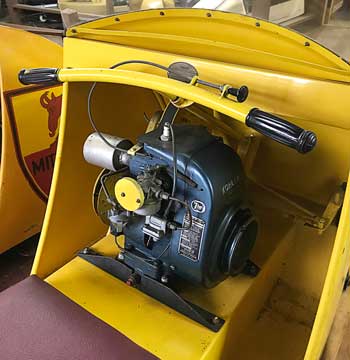
Bombardier continued to make improvements to their product. Although many of the companies had started out using four-stroke engines, Ski-Doo engineers found two-stroke engines to work better for snowmobiles. The two-stroke engine could run at higher revolutions per minute and produce more power.
Improvements were also made to the CVT drive system. Manufacturers were able to tune them to the higher revving two-stroke engines to improve efficiency. The 70’s through the 90’s saw many advances in snowmobile technology, competition racing forced manufacturers to make great strides in engine efficiency, chassis structure, suspension technology and travel, as well as improvements to the drive system.
Ski-Doo Revolutionizes Snowmobile Design
Ski-Doo introduced another major design change to the snowmobile chassis in 2003. The new model, called the REV (short for Revolutionary), used a chassis with a pyramidal design for structural rigidity.
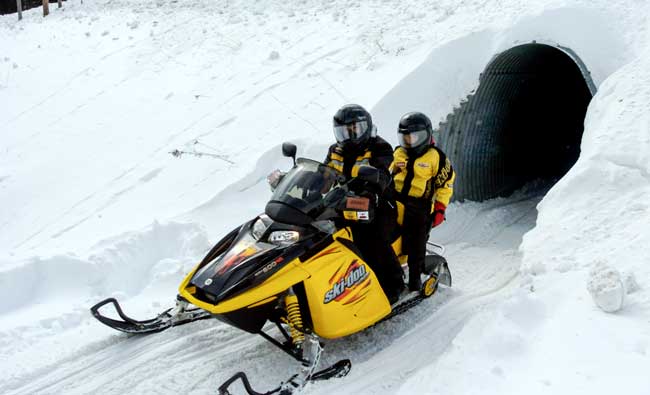
The engine was mounted low in the center of the chassis to centralize the weight mass and lower the center of gravity. Driver position was moved up and forward on the sled, improving driver control and also reducing feedback from rough trails.
As the manufacturers continue to make improvements to snowmobile technology, we the snowmobile enthusiasts will continue to reap the rewards. What could the next major breakthrough be? We can only imagine.
Thank you to Andree Richer and the Museum of Ingenuity J. Armand Bombardier for the help with this article.
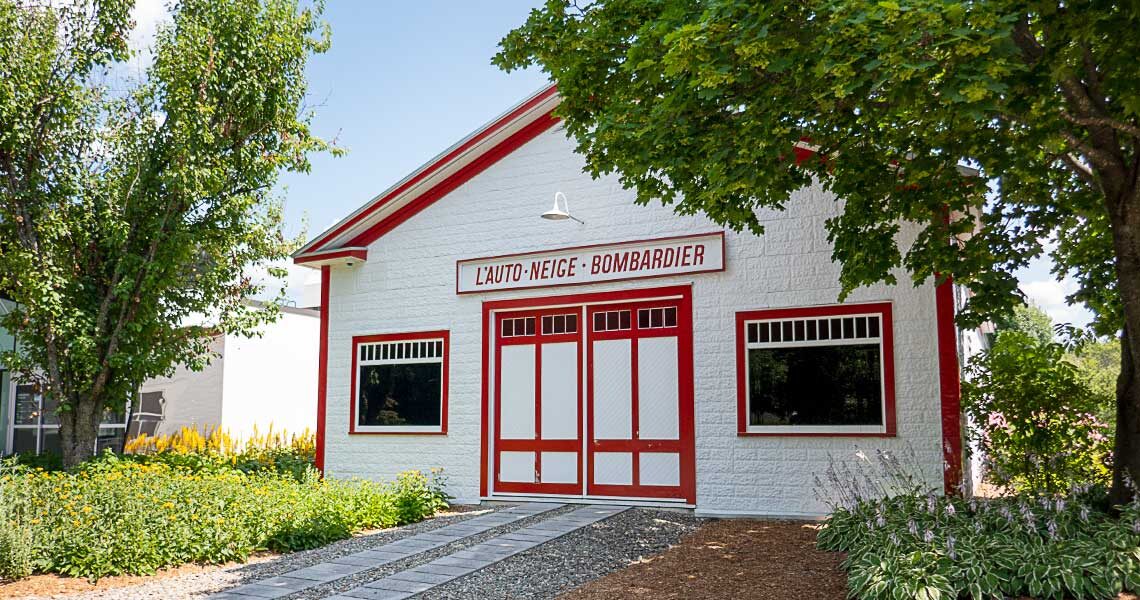
You must be logged in to post a comment.